This delicious keto fried fish is coated in almond flour and cooked in avocado oil until hot and crispy. Ready in 30 minutes, this easy recipe is amazingly close to the real thing!
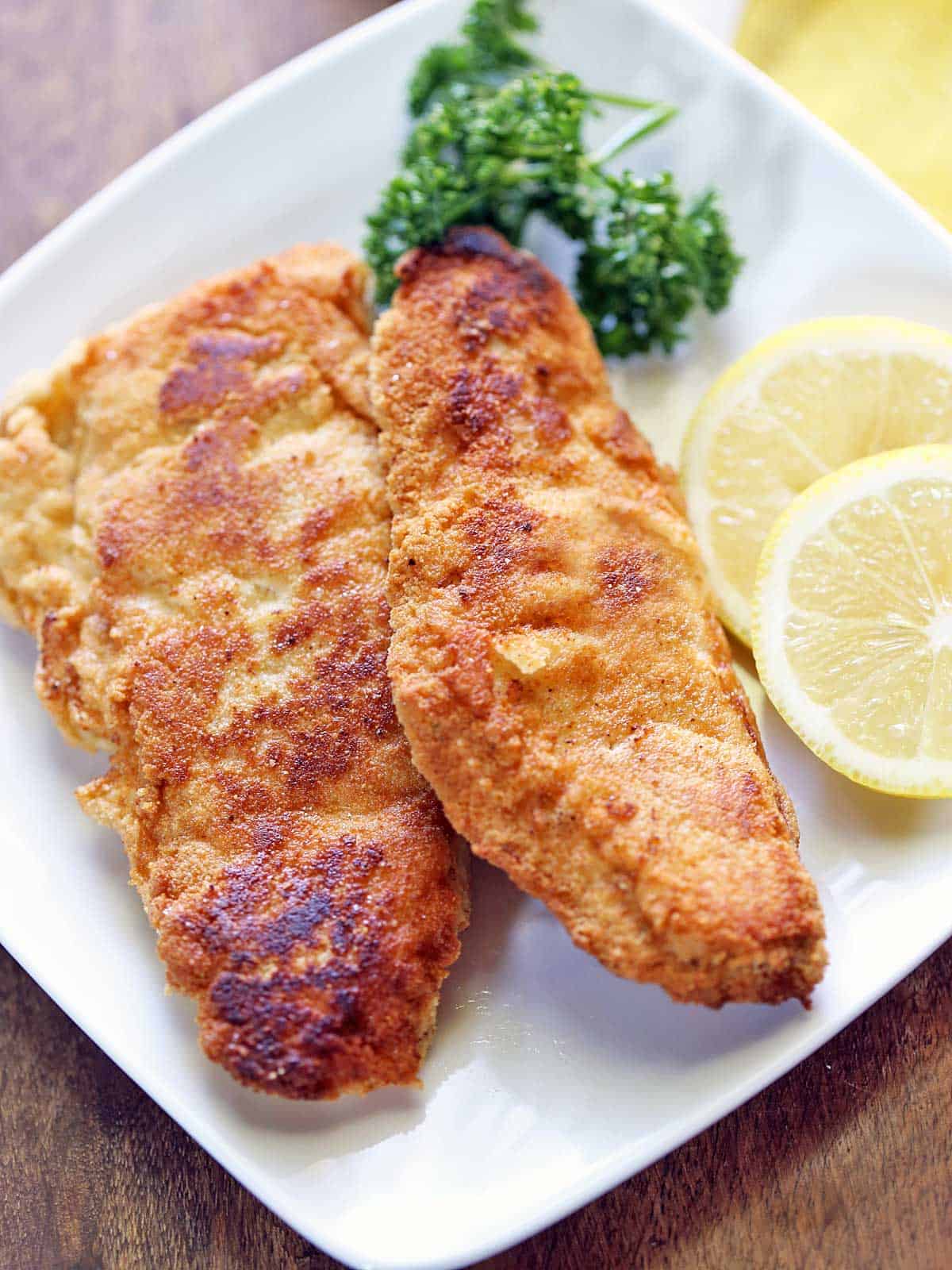
I developed this recipe for my daughter, who refuses to touch fish unless it's fish and chips. So, as a happy compromise, I make baked catfish, sole meunière, or keto fried fish and serve them with jicama fries or zucchini fries. It's only a compromise because it's more work than baking fish (like baked cod). It's not a compromise in terms of flavor!
Ingredients and Variations
See the recipe card for exact measurements. Here are my comments on the ingredients.
- Egg: I use large eggs in most of my recipes, including this one.
- To season: Kosher salt, black pepper, garlic powder, and dried thyme. Sometimes, I add a pinch of paprika.
- Fish: I use thin (½-inch-thick) fillets of firm, white fish such as cod.
- Almond flour: I use superfine almond flour. A coarse almond meal will work, too.
- Avocado oil: This oil has a neutral flavor and a high smoke point, making it an ideal cooking oil. Ghee is a good substitute for the oil.
Instructions
The detailed instructions and step-by-step photos are included in the recipe card. Here's a quick overview.
Whisk the egg with the seasonings. Dip each fish fillet into the mixture. Place each fillet on a cutting board and sprinkle both sides with almond flour. Press with your hands to help the coating adhere.
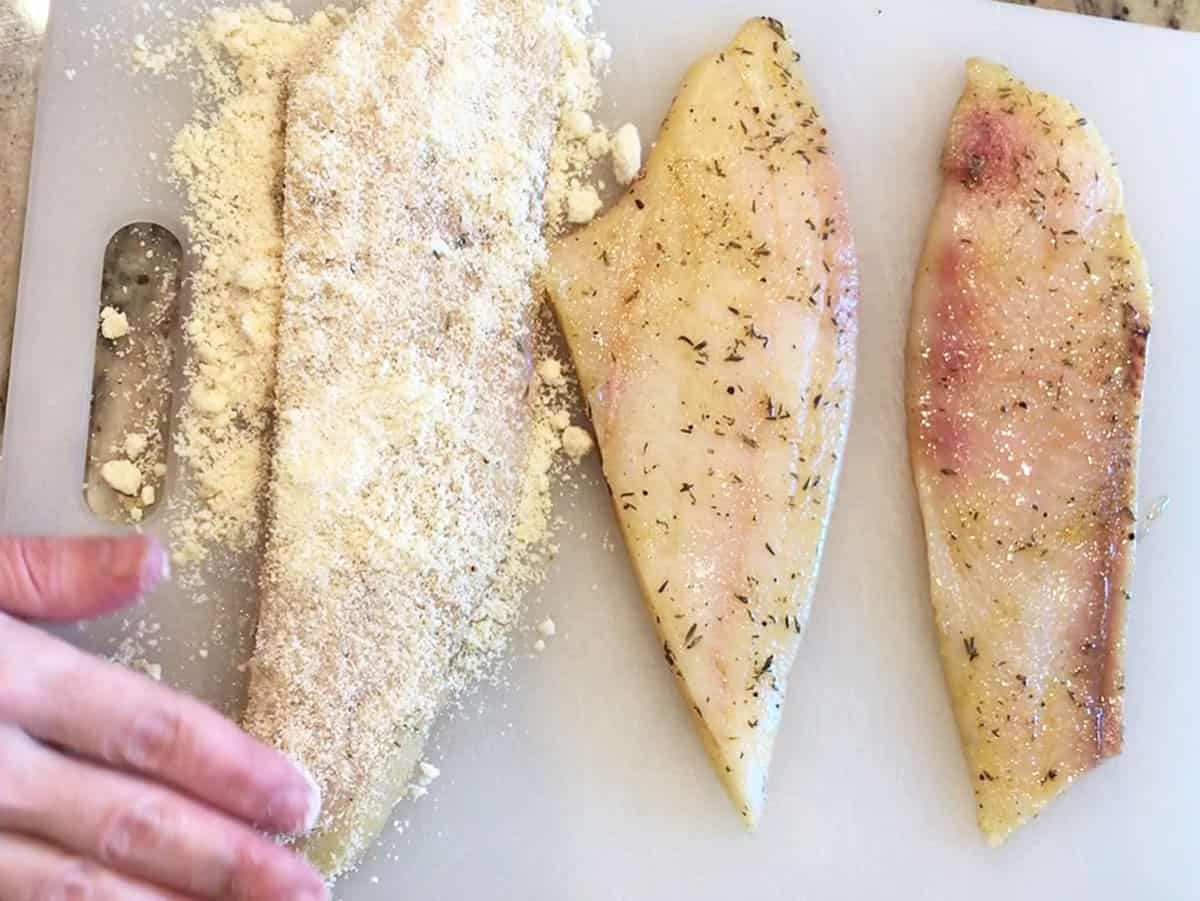
Heat avocado oil over medium-high heat. Cook the fish until golden brown and crisp, 3-4 minutes per side.
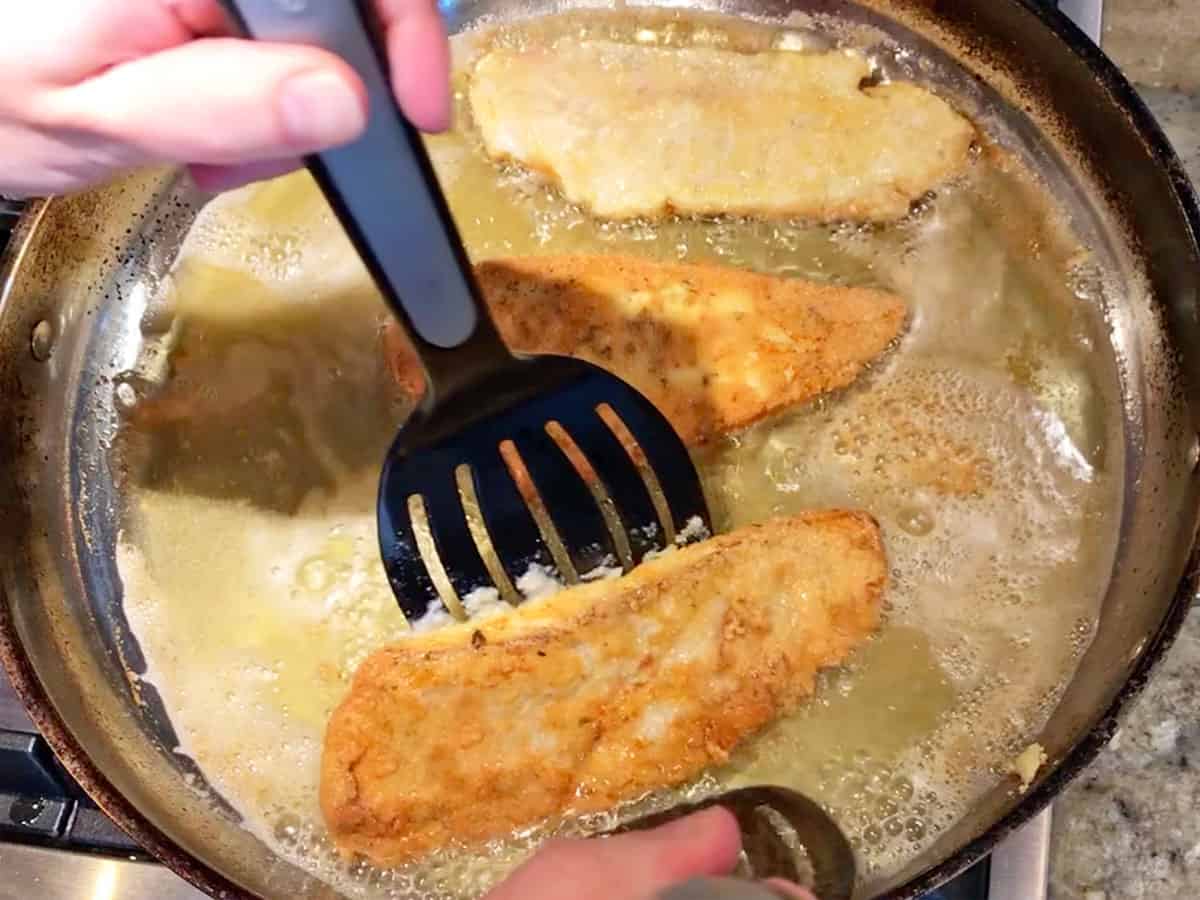
Serve immediately.

This was wonderful! I made it exactly as written. It reminds me of the fish I get at local restaurant that I love, minus the carbs! Thanks so much for all you do!
Cathy
Read more comments
Recipe Tips
- It's best to use a nonstick skillet. I do use stainless steel on occasion, but then there's more of a risk of the coating sticking to the skillet, even with a generous amount of oil.
- It's better to sprinkle the fish pieces with almond flour than to dredge them. When dredging, the almond flour that remains in the bowl becomes soggy, sticky, and pretty much useless.
- According to the USDA, fish should be cooked to an internal temperature of 145°F. When done, its inside should be opaque, and you should be able to easily flake the meat with a fork.
- If you prefer to bake the fish, arrange the coated fillets on a greased parchment-lined baking sheet (use high-temperature parchment), liberally spray them with oil, and bake until crispy on the outside and cooked through on the inside. In my oven, this takes about 10 minutes per side at 400°F. But pan-frying is better and results in tastier fish with crispier coating.
- Storage tips: You can keep the leftovers in an airtight container in the fridge for up to 3 days. Reheat them uncovered in a 350°F oven. I don't recommend freezing the leftovers.
Serving Suggestions
It's always a good idea to serve white fish with lemon slices on the side in addition to tartar sauce or sriracha mayo for dipping.
When it comes to sides, if you'd like to recreate the experience of eating fish and chips, serve this dish with jicama fries or zucchini fries.
It's also perfect with a salad. I like to serve it with homemade coleslaw, cucumber tomato salad, arugula salad, or broccoli salad.
Recipe Card
Crispy Keto Fried Fish
Video
Ingredients
- 1 large egg
- 1 teaspoon Diamond Crystal kosher salt - or ½ teaspoon of any other salt, including Morton kosher salt
- ½ teaspoon black pepper
- ½ teaspoon garlic powder
- ½ teaspoon dried thyme
- 4 6-ounce cod fillets - ½-inch thick (not thicker)
- 1 cup superfine almond flour
- Avocado oil
Instructions
- In a shallow bowl, whisk the egg with salt, pepper, garlic powder, and dried thyme.
- Dip each fish fillet into the egg mixture. Place it on a cutting board and sprinkle both sides with the almond flour, ¼ cup per fillet, pressing with your hands to help the coating adhere. I find that this method works better than dredging the fish in the almond flour. When dredging, the almond flour that remains in the bowl becomes soggy, sticky, and pretty much useless.
- Pour avocado oil into a large nonstick frying pan, enough to reach about ½ inch high. Heat over medium-high heat until hot, 3-5 minutes.
- Carefully place the fish fillets in the pan (work in batches if necessary). Cook until their bottom is golden brown and crisp, 3-4 minutes.
- Flip the fish. Lower the heat to medium. Cook until crisp and cooked through, about 3-4 more minutes.
- Serve immediately.
Notes
- I typically use cod, but any firm, white-fleshed fish will work in this recipe.
- In the nutrition info, I estimated that each fish fillet absorbs about one tablespoon of oil.
- It's best to use a nonstick skillet. I often use stainless steel, but then there's more of a risk of the coating sticking to the skillet, even with a generous amount of oil.
- According to the USDA, fish should be cooked to an internal temperature of 145°F. When done, the inside should be opaque, and you should be able to easily flake the meat with a fork.
- If you prefer to bake the fish, arrange the coated fillets on a greased parchment-lined baking sheet (use high-temperature parchment), liberally spray them with oil, and bake until crispy on the outside and cooked through on the inside. In my oven, this takes about 10 minutes per side at 400°F. Spray them again after flipping. However, pan-frying is better and results in tastier fish with crispier coating.
- You can keep the leftovers in an airtight container in the fridge for up to 3 days. Reheat them uncovered in a 350°F oven. I don't recommend freezing the leftovers.
Nutrition per Serving
Save this Recipe!
We will also add you to our weekly newsletter. Unsubscribe anytime. See healthyrecipesblogs.com/privacy/ to learn how we use your email.
Disclaimers
Most recipes are low-carb and gluten-free, but some are not. Recommended and linked products are not guaranteed to be gluten-free. Nutrition info is approximate. Please verify it independently. The carb count excludes non-nutritive sweeteners. Please read these Terms of Use before using any of my recipes.

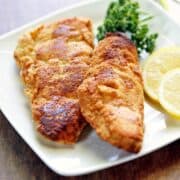
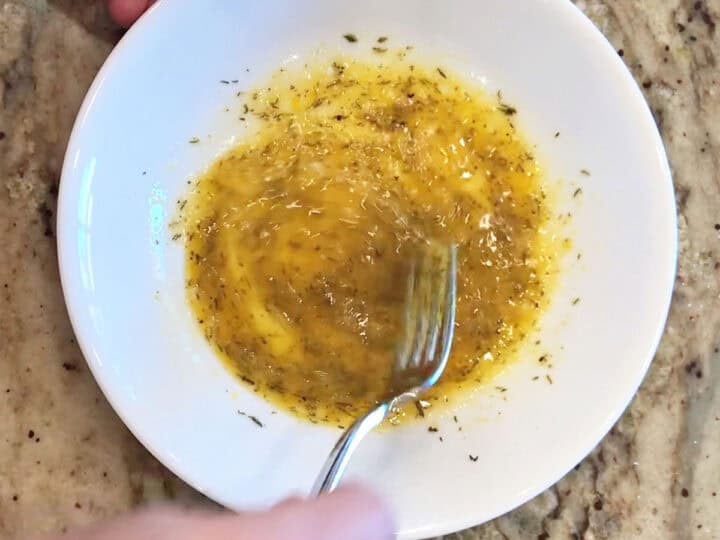
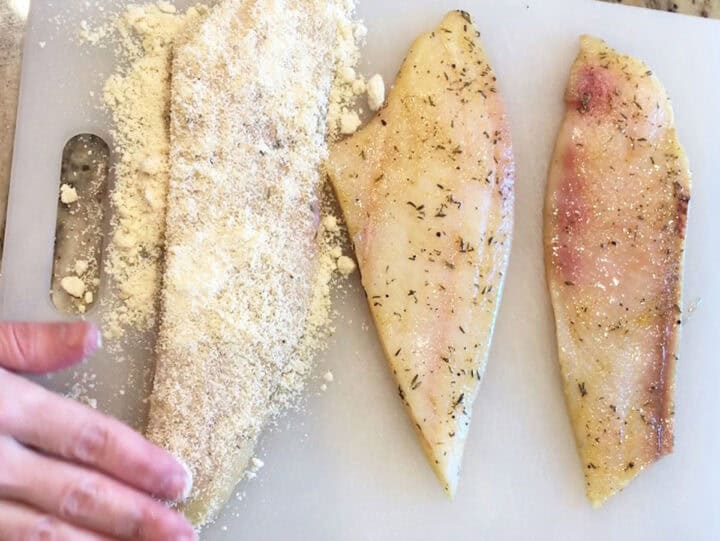
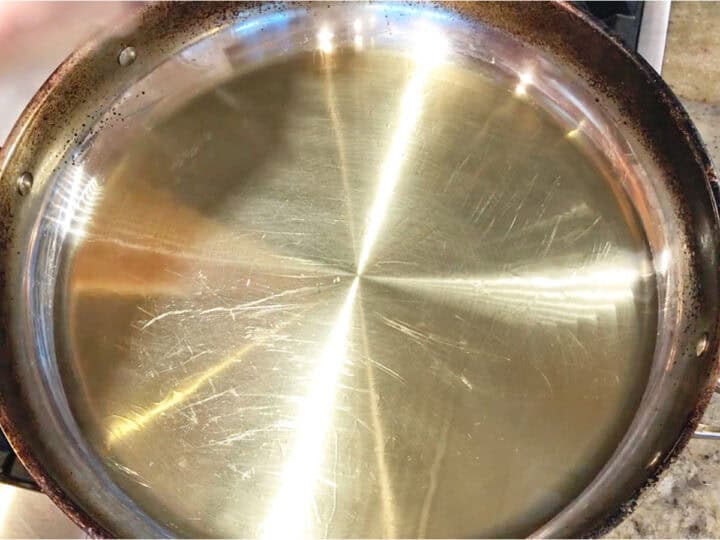
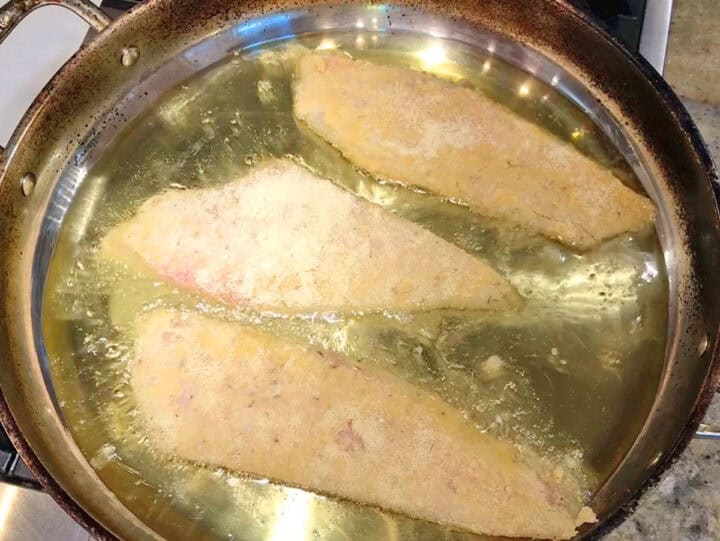
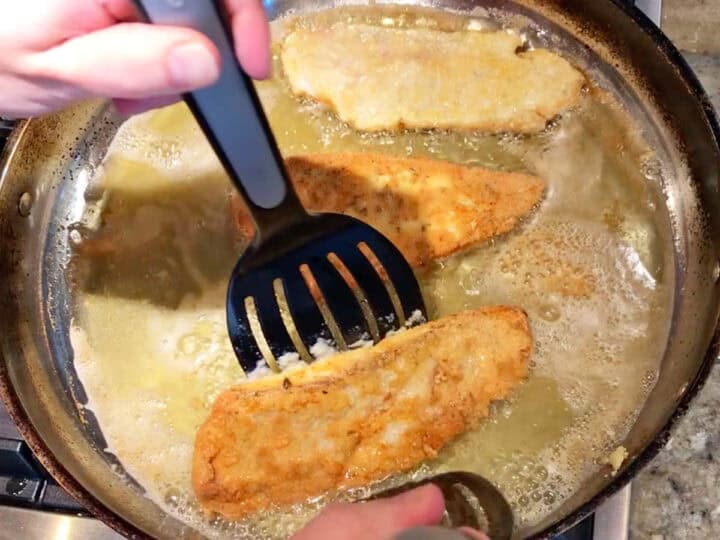
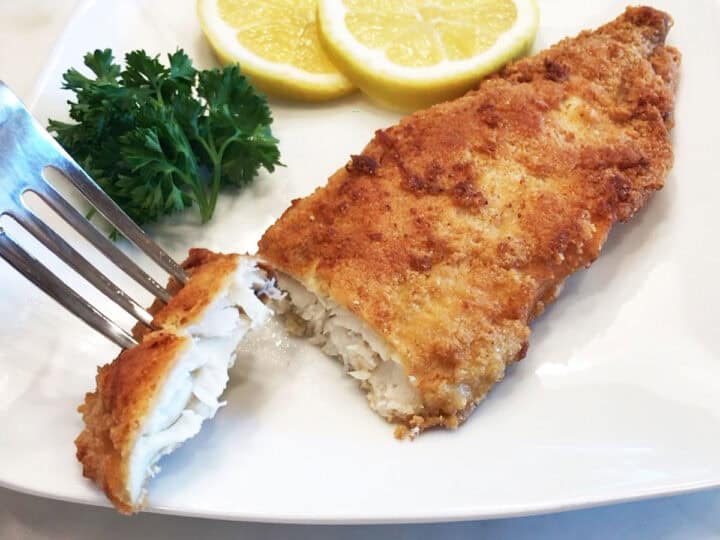
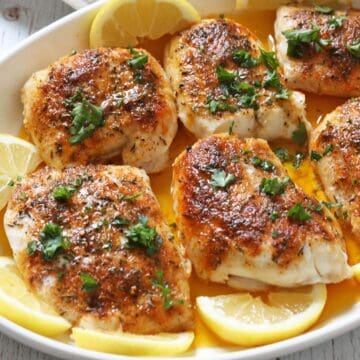
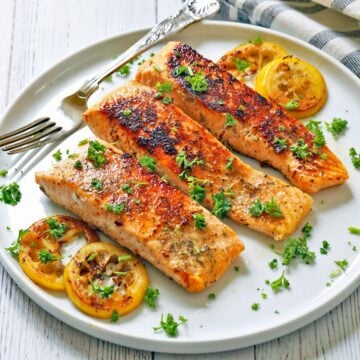
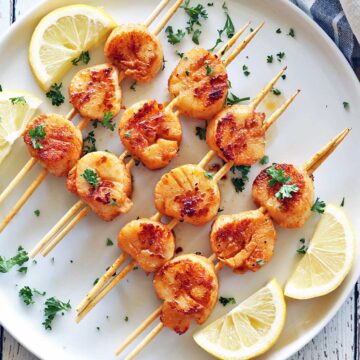

Diana says
Great flavor and easy to make. Thank you!
Vered DeLeeuw says
You're very welcome, Diana! I'm glad you liked it. Thanks for the review.
Cee says
Family said it tasted good, but it was really heavy for me. I never fry in oil. I guess this is the feeling you have afterwards? Probably would be healthier and lighter if baked ... no oil. I did everything as instructed EXCEPT I used only about 1/4 cup of avocado oil since I had thin fillets (petrale sole). Used dried dill, garlic powder, salt, and pepper.
Vered DeLeeuw says
Hi Cee,
Thank you for trying the recipe and sharing your thoughts! You’re right - fried foods can definitely feel heavier, so it sounds like it may just come down to personal preference. This particular recipe is meant to be fried for that classic crispy texture, but if you prefer a lighter version, baking the fish is an option too. I actually included baking instructions in the article above the recipe card, but you must have missed them since they weren’t in the recipe card's notes section. I just added them there as well for easier access.
Anne says
Only thing I’d change is the added salt to the egg mixture. Half as much would have been enough. Just a personal preference. Regardkess, my hubby had seconds and he never had seconds of fish!
Vered DeLeeuw says
Yaaay! I'm so glad this was a success, Anne. Thanks for the review and feedback.
I'm curious - did you use Diamond Crystal kosher salt? To your palate, a teaspoon of it (or half a teaspoon of any other salt) was too much?
Cathy says
This was wonderful! I made it exactly as written. It reminds me of the fish I get at local restaurant that I love, minus the carbs! Thanks so much for all you do!
Vered DeLeeuw says
You're very welcome, Cathy! I'm glad you enjoyed it. Thanks for taking the time to review this recipe.
Mags says
Amazing, so tasty and crispy !! This will be my new way to prepare fish fillets forever ... Thank you very much ❤️
Vered DeLeeuw says
You're very welcome! I'm so glad this was a success.
Christopher Banks says
Can I use ground pork rind instead of almond flour?
Vered DeLeeuw says
Hi Christopher,
Pork panko works in this recipe, but it won't come out as crispy as almond flour. If using it, you can skip the salt, as it is quite salty.
Paul Halbert says
Loved this recipe!!! I added a 1/2 tsp ground cayenne pepper. Gave it a subtle kick, was amazing!
Vered DeLeeuw says
Hi Paul,
I'm so glad you enjoyed this recipe! I love the idea of adding cayenne - thanks for sharing it!
doug shaffer says
We are not able to use normal flour can we use almond flour?
Vered DeLeeuw says
Hi Doug,
Absolutely. The recipe calls for this almond flour.
Ann Jackson says
do you think crushed pork rinds would be a good alternative to almond flour? I have a bunch. maybe I'll try it and see...
Vered DeLeeuw says
Hi Ann,
Finely crushed pork rinds should work, although they won't come out as crispy as almond flour. If using them, you can skip the salt, as they are quite salty.